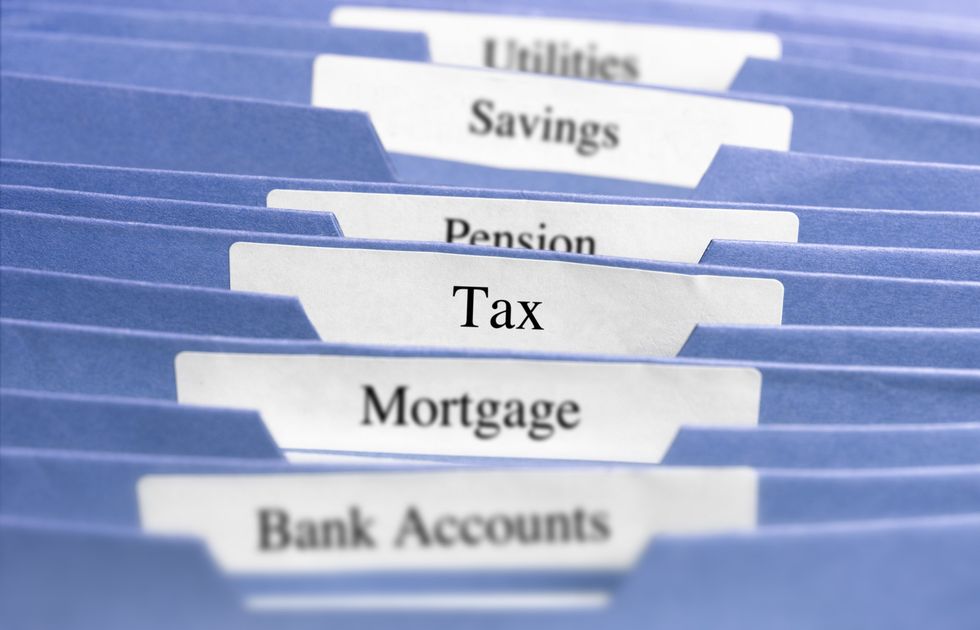An extra 100,000 workers have been dragged into the 60 per cent tax trap over the past year, according to new figures from HM Revenue & Customs.
The latest data shows 885,000 people are now losing their full personal allowance after earning over £100,000 in the 2024/25 tax year.
A further 591,000 workers are seeing their tax-free allowance partially reduced.
The sharp rise comes as more employees find themselves caught by frozen tax thresholds, with the number of affected taxpayers jumping 18 per cent from 537,000 in the previous year.
The tax squeeze is set to intensify, with HMRC projecting over one million people will be impacted by 2027-28.
The punitive tax trap kicks in when workers earn over £100,000, at which point their personal allowance – currently frozen at £12,570 – begins to taper away.

A further 591,000 workers are seeing their tax-free allowance partially reduced
GETTY
For every £2 earned above the £100,000 threshold, £1 of the tax-free allowance is removed.
Sean McCann, chartered financial planner at NFU Mutual said: “If you’re earning more than £100,000, it does come with quite a tax sting as you face a 60 per cent tax on those earnings.”
When combined with national insurance of two per cent, workers keep just £38 of every £100 earned within this band.
Some 337,000 taxpayers were affected in 2018-19, according to HMRC figures released under Freedom of Information rules.
Mark Incledon, chief executive of Bowmore Financial Planning, said: “The number of taxpayers falling victim to this notorious tax trap was already incredibly large – recent wage inflation has pushed almost 100,000 more into this position.”
The Office for Budget Responsibility estimates an additional eight million taxpayers will be pushed into higher rate tax due to frozen thresholds.
The surge in affected taxpayers is largely driven by fiscal drag – where tax thresholds remain static while wages rise with inflation.
McCann explained that if the £100,000 threshold had risen with inflation, it would now be worth £149,000.
“Fiscal drag is a great way to raise more revenue, while sticking to [Labour’s] promise of not increasing tax rates,” he said.
Strategies to avoid the 60 per cent tax trap
Minimising the 60 per cent tax impact requires careful planning around income and tax relief opportunities
McCann pointed out that tax payers can make use of salary sacrifice and charitable giving.
He said: “Salary sacrifice can be a very tax efficient way to save. An employee with earnings of £125,140 who sacrificed £25,140 in return for an employer pension contribution of the same amount would see £25,140 going into their pension at a cost to them of £9,554.
“This would save the employee £15,084 in income tax (paid at 60 per cent) plus two per cent in NICs (£502).”
However, potential changes to employer NICs on pension contributions could make such arrangements less attractive in future, McCan explained.
Donations to eligible charities can also qualify for tax relief, effectively reducing their taxable income.
Some may also try and time bonuses and dividend payments. For instance, delaying a bonus to the following tax year could prevent it from pushing their current year’s income over £100,000, thereby avoiding the 60 per cent tax trap.
A Treasury spokesman said: “We are committed to keeping taxes low for working people, which is why we protected payslists from tax rises and are not extending the freeze on personal tax thresholds past 2027/28.”
However, Chancellor Rachel Reeves did nothing to ease the burden in her October Budget.
Instead, she extended the freeze on thresholds introduced by ex-Chancellor Jeremy Hunt in 2021 until April 2028.
Incledon said: “It’s very surprising the Government chose to not address this in the latest Budget. Rather than trying to fix the problem, the Government has allowed it to get bigger.”